Pat Oliphant With a career spanning 35 years of American politics and counting, popular political artist Pat Oliphant serves as a role model for a generation of political and editorial cartoonists. Deemed the “most influential editorial cartoonist now working” by the New York Times, and credited by fellow Pulitzer Prize-winning editorial cartoonist Mike Luckovich with “creating modern-day political cartoons,” Oliphant’s work appears in approximately 375 newspapers, four days a week.

Pat Oliphant
Birth: July 24, 1935
Nationality: Australian-American
Occupation: Cartoonist
Career Span: Over 60 years
Famous For: Editorial Cartoons on American Politics
Notable Awards: Pulitzer Prize, Reuben Award
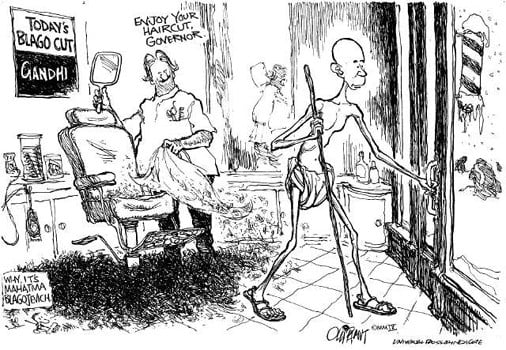
Australian Beginnings
Pat Oliphant’s early life was rooted in the picturesque Adelaide Hills in Australia. Raised in a small cabin in Aldgate, he was the son of Donald Knox Oliphant and Grace Lillian Oliphant. His father, a government draftsman, unwittingly ignited Oliphant’s passion for drawing, which would later shape his entire career.
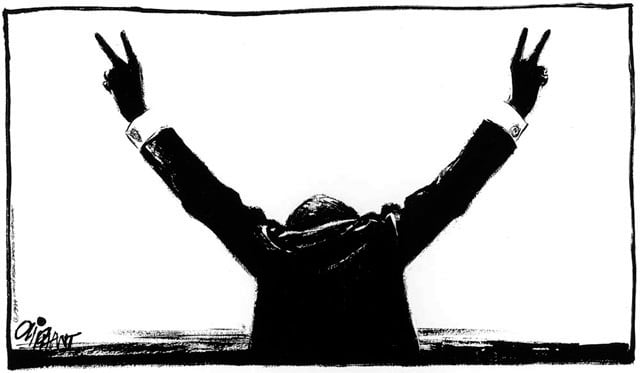
Oliphant’s journey in journalism commenced in 1952 when he began working as a copyboy for Adelaide’s evening tabloid newspaper, The News. Interestingly, the newspaper had recently been acquired by Rupert Murdoch. Even though formal education did not particularly appeal to him, Oliphant was already determined to become a journalist. In 1955, he transitioned to The Advertiser, a morning broadsheet with a substantial readership of 200,000. His talents in drawing began to shine, and he soon started producing both cartoons and illustrations. Frustrated with the paper’s conservative editorial policies and frequent rejection of his commentaries on Australian politics, Oliphant found solace in cartooning about international affairs.
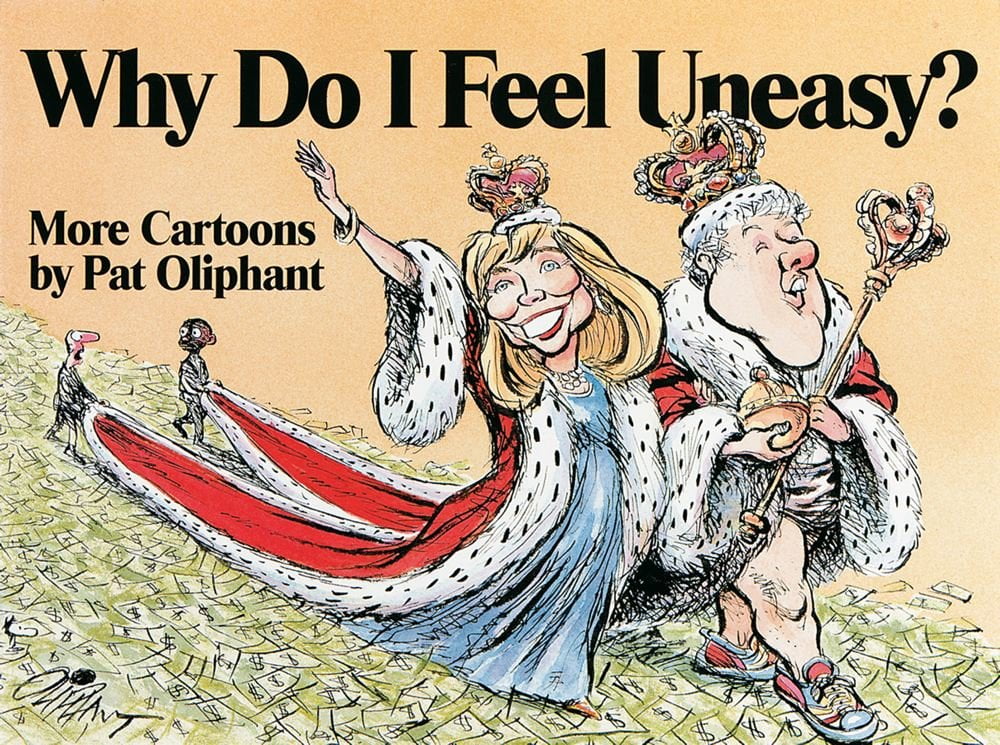
The American Dream
Oliphant’s aspiration to move to the United States was realized in 1959 after he spent time learning about cartooning in both the United States and Great Britain. However, he had to stay until his contract with The Advertiser concluded. 1964, a lucky opportunity arose when he learned that The Denver Post was searching for a cartoonist. Oliphant sent a portfolio of his work to the Post and remarkably secured the position with over fifty American applicants. With his wife, Hendrika DeVries, and their two children, Oliphant embarked on a journey to the United States.
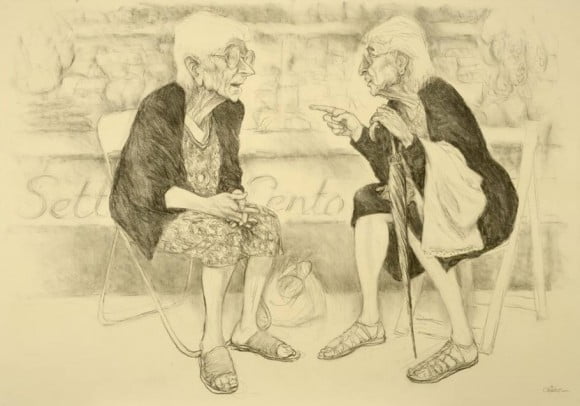
Oliphant’s arrival in the United States was announced in Time magazine, which praised his ability to capture the essence of political figures like Lyndon B. Johnson and Barry Goldwater. In less than a year, his work was syndicated internationally by the Los Angeles Times Syndicate, further enhancing his reputation.
In 1967, he received the Pulitzer Prize for Editorial Cartooning, a prestigious award for his powerful cartoon titled “They Won’t Get Us To The Conference Table … Will They?” This cartoon depicted Ho Chi Minh carrying a dead Vietnamese man, reminiscent of the Pietà. Interestingly, Oliphant had submitted this cartoon, which he considered one of his weakest, as a form of protest against the Pulitzer board’s focus on subject rather than artistic quality. He declined further consideration for the award and became a vocal critic of the Pulitzer Prize selection process.
Biography
Australian Period
Pat Oliphant was raised in a small cabin outside of Adelaide. His father worked as a draftsman for the government, and Oliphant credited him with sparking his interest in drawing. In his early years attended school in a one-room schoolhouse. He attended Olney High School. Oliphant’s career in journalism began in 1952 when as a teenager, he began working as a copy boy with Adelaide’s evening tabloid newspaper, The News, which had recently been inherited by Rupert Murdoch. He had no interest in going to college; he had an ambivalent relationship to formal education and already knew he wanted to be a journalist. In 1955 he moved to the News‘s rival The Advertiser, a morning broadsheet with 200,000 subscribers.
He found inspiration during this period in the work of English cartoonist Ronald Searle, the western Australian cartoonist Paul Rigby, and Mad magazine’s political commentary, which he called a “shot in the arm”.
United States Period
The Denver Post years :
In 1959 Oliphant went to the United States and Great Britain to learn about cartooning in those nations. He decided that he wanted to move to the United States. However, he had to wait five years until his contract with the Advertiser ran out. In 1964, while preparing to move without a job, he learned that cartoonist Paul Conrad was leaving the Denver Post. Oliphant sent a portfolio of work to the Post and was hired over 50 American applicants. Oliphant moved to the United States with his wife, Hendrika DeVries, and his two children. The Post placed a small snippet of the day’s Oliphant cartoon on the paper’s front page as a “teaser” for what would be found on the editorial page.

Less than a year after Oliphant began working at the Denver Post, in April 1965, his work was syndicated internationally by the Los Angeles Times Syndicate. Oliphant’s reputation grew swiftly, and in 1967 he was awarded the Pulitzer Prize for Editorial Cartooning for his 1 February 1966 cartoon They Won’t Get Us To The Conference Table … Will They? In this cartoon, Ho Chi Minhcarries the body of a dead Vietnamese man in the posture of a Pietà. Oliphant had intentionally submitted a cartoon that he felt was among the weakest he had published that year. When it won, he roundly criticized the Pulitzer board, stating that they had selected the cartoon for its subject matter rather than the quality of the work. He refused to be considered for the award ever again and became a regular critic of the Pulitzer.
According to Ralph Steadman, Oliphant would have been Hunter S.Thompson’s “first choice of a ‘cartoonist collaborator.’
The Washington Star years
In 1975 Oliphant moved to the Washington Star, wooed by editor Jim Bellows. In 1980, he switched syndication companies, joining Universal Press Syndicate. The Star went out of business in 1981.
The independent years
After the Star folded, Oliphant had offers from other newspapers, but decided to remain independent, living off the earnings from his extensive syndication. He was the first political cartoonist in the twentieth century to work independently from a home newspaper.a situation that provided him with unique independence from editorial control. By this time, he had become a nationally recognized figure.
In the early 1980s, Oliphant noticed that the rest of the field followed suit. In 1990, the New York Times described him as “the most influential editorial cartoonist now working.”
In 1979, Oliphant was naturalized as an American citizen. In 1983 he married his second wife, Mary Ann Kuhn. They divorced in 1994, and he married Susan C.Conway in 1996; they remain married today.
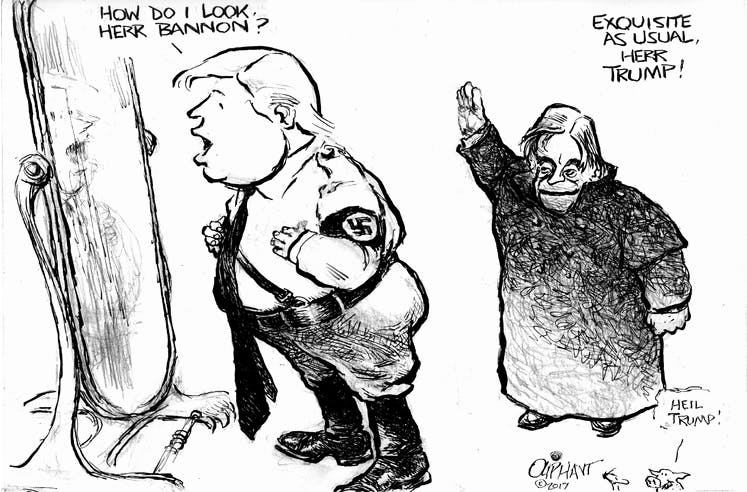
Oliphant’s Influence and Unique Style
Oliphant’s artistic style evolved considerably throughout his career. His early cartoons in Australia emulated the style of his predecessors, but he soon developed a distinctive and easily recognizable style. His caricatures were renowned for their grotesque and extreme distortions, making his subjects immediately identifiable. His impeccable drafting skills and innovative use of the horizontal format of editorial cartoons set him apart. Curator Harry Katz aptly described him as “one of history’s finest comic artists.”
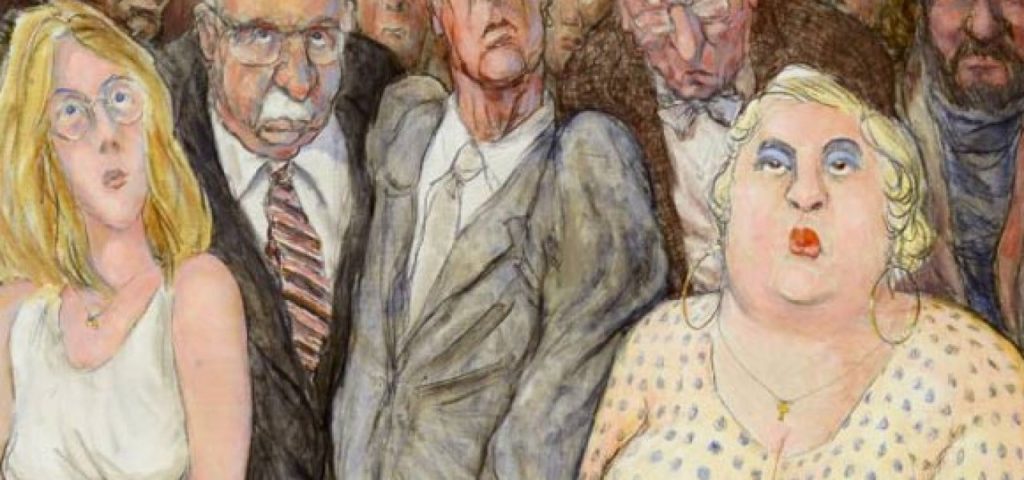
A significant portion of Oliphant’s work was centered on caricaturing American presidents. His ability to develop distinctive portrayals for each president became a hallmark of his career. For instance, he depicted Richard Nixon as dark, brooding, and sometimes vulnerable, often referencing iconic imagery like Adam and Eve. Gerald Ford was humorously characterized with a band-aid on his forehead, highlighting his perceived clumsiness. Ronald Reagan was portrayed as an oblivious buffoon, while George H. W. Bush was humorously represented as “Bush of Arabia.”
Punk: Oliphant’s Subversive Sidekick
Early in his career, Oliphant introduced a small penguin character named Punk into almost every one of his political cartoons. Punk served as a vehicle for Oliphant’s personal opinions within the confines of the newspaper’s editorial policies. Punk’s expressions and viewpoints varied from cartoon to cartoon, ranging from bemusement to irony to trenchant commentary. This character added depth to Oliphant’s cartoons and engaged adult and child readers, who enjoyed the challenge of spotting Punk in each cartoon.
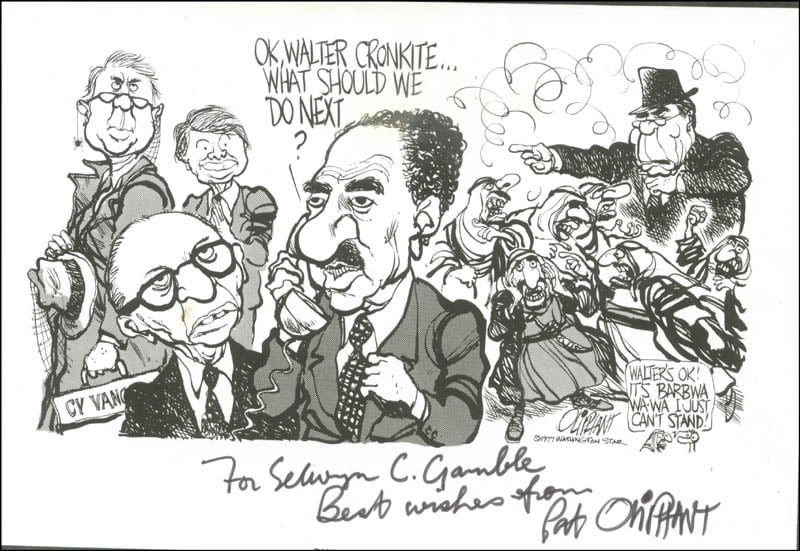
Courting Controversy
Oliphant’s cartoons rarely held back in their criticism. He intentionally provoked controversy, believing his role was to critique without restraint. His cartoons garnered criticism from various political, ethnic, and religious groups over the years. For example, his depictions of Asian Americans in 2001 were accused of racial caricature. In 2007, a cartoon about Israel’s offensive against Hamas in Gaza sparked outrage among some American Jews, with critics likening it to Nazi propaganda. Oliphant also faced backlash for his cartoons addressing the Catholic Church’s sexual abuse scandals. Despite the controversy, he remained resolute in his commitment to unfettered political commentary.
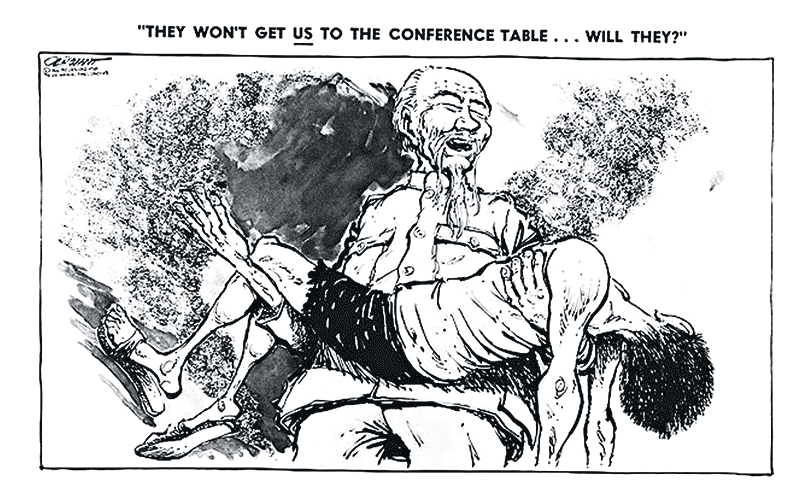
The Legacy Endures
Pat Oliphant’s impact on the world of political cartooning is immeasurable. His refusal to compromise his artistic integrity for editorial control made him a trailblazer in the field. He achieved what few cartoonists had by working independently, transcending the confines of a home newspaper.
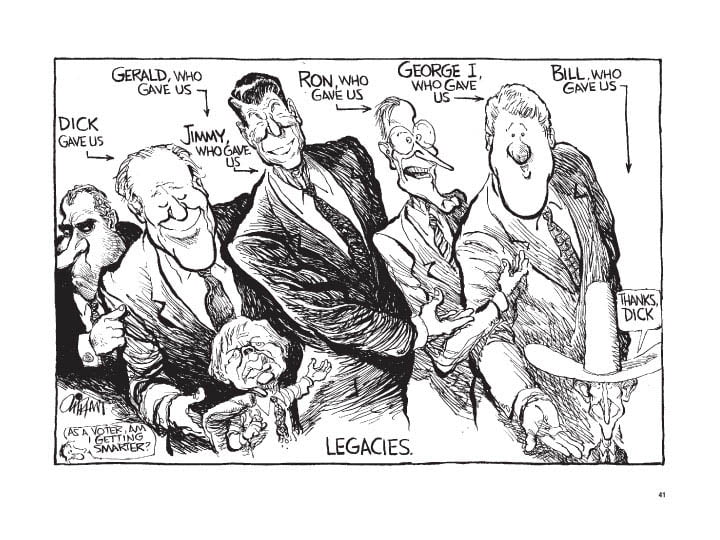
Oliphant’s retirement in 2015 marked the end of an era, but his influence continues to resonate in the work of contemporary political cartoonists. His unique style, unapologetic critique, and the enduring legacy of Punk, his beloved penguin character, serve as a testament to the power of art to provoke thought, challenge authority, and shape public discourse.

Non–newspaper drawing
Newspaper editorial cartoons were not Oliphant’s only genre. In his earliest days in Australia, he produced a wide variety of newspaper illustrations. Later in his career, he produced illustrations for several books and his work, often in full color, was featured in the pages and on the covers of numerous magazines. For a time he drew cartoons for Rolling Stone: this body of work is produced for a different audience than his newspaper cartoons and is often more graphic or intentionally offensive than his work for the syndicate. In the 1990s he drew for a Northwest Airlines advertising campaign advocating the “open skies” policy concept (Oliphant has flown himself, and has had a pilot’s license).
Sculpture
Pat Oliphant began working in bronze in the early 1980s and produced a significant body of work over the remainder of his career. His bronze caricatures have been compared favorably with those of the nineteenth-century French caricaturist Honoré Daumier. Oliphant’s bronzes are frequently heads, busts, or full figure portraits of major political figures, though he has also sculpted animals, human types, and compositions containing multiple figures.
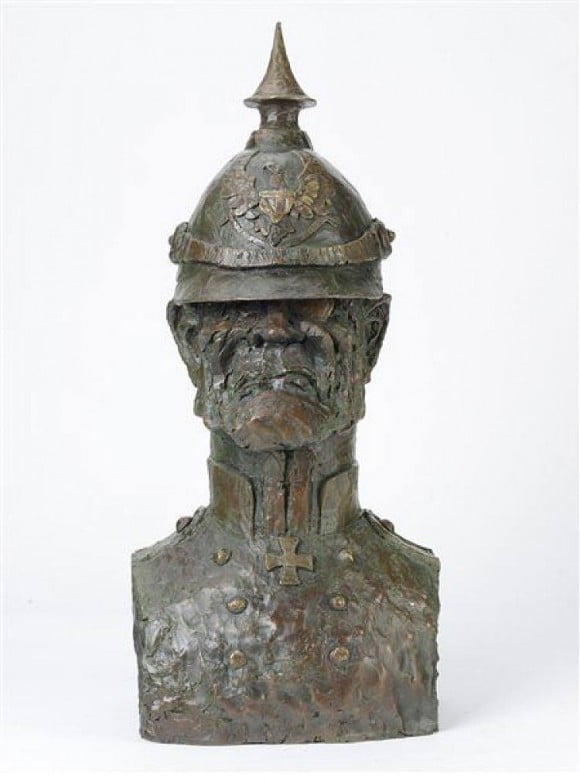
Awards and honors
1.Award-winner in the Grand Challenge Editorial Cartoonist Competition (London),1958.
2. Sigma Delta Chi Distinguished Service Award, Society of Professional Journalists,1966
3. Pulitzer Prize for Editorial Cartooning,1967
4. Reuben Award for Outstanding Cartoonist of the Year, National Cartoonists Society 1968,1972
5. Distinguished Service Award, National Wildlife Federation,1969
6. Reuben Award for Editorial Cartooning,National Cartoonists Society, (1971,1973,1974,1984,1989, 1990,1991)
7. Tajiri Award, American Civil Liberties Union,1973
8. National Headliners Award for Editorial Cartooning
9. National Cartoonist Society Editorial Cartoon Award(1971,1972,1973,1974,1984,1989,1990,1991).
10. Honorary Doctor of Humane Letters, Dartmouth College,1981
11. Thomas Nast Prize,1992.
12. Cartoonist of the year, Washington Journalism Review (1985, one other year)
Trivia
Pat Oliphant is the nephew of Sir Mark Oliphant, the Australian physicist who worked on the Manhattan Project during World War II, and who later became Governor of South Australia. Pat Oliphant enjoys flying and has had a commercial pilot’s license. He has long been a member of the Bad Golfers Association. He is a left-handed vegetarian.
Archives and Collections
Pat Oliphant’s papers reside at the Albert and Shirley Small Special Collections Library at the University of Virginia and include almost 7,000 daily cartoon drawings, dozens of sketchbooks, fine art on paper, sculpture, fan and hate mail and extensive documentation of Oliphant’s career. His works are held in the permanent collections of the Library of Congress, National Portrait Gallery, Gerald R. Ford Presidential Museum, the George W. Bush Library, The University of Colorado Library, and New Mexico Museum of Art in Santa Fe.
Patrick Bruce “Pat” Oliphant, the Australian-born American artist, left an indelible mark on political cartooning. His six-decade career was defined by a commitment to unbridled political satire and an artistic style that pushed boundaries. From his early days in Australia to his iconic work in the United States, Oliphant’s caricatures of American presidents and influential figures became a cultural touchstone. Punk, his subversive penguin companion, added depth to his cartoons, engaging readers in a game of hidden meanings.
Oliphant was not without controversy, often courting backlash for his unapologetic critiques. However, he remained steadfast in his belief that his role as a cartoonist was to provoke thought and challenge the status quo.
As Pat Oliphant’s retirement marked the end of an era, his legacy endures through the continued influence of his distinctive style and fearless approach to political cartooning. He remains a symbol of the power of art to shape public discourse and hold those in power accountable.
Read also: William Ellis Green (1923 – 2008)
FAQs about Pat Oliphant
Who is Pat Oliphant?
Pat Oliphant is an Australian-born American cartoonist known for his editorial cartoons on American politics and global affairs.
What is Pat Oliphant’s career span?
Pat Oliphant’s career as a cartoonist spanned over sixty years.
What is Pat Oliphant famous for?
Pat Oliphant is mainly known for his caricatures of American presidents and other influential leaders.
What awards did Pat Oliphant receive?
Pat Oliphant received numerous awards, including the Pulitzer Prize and the Reuben Award for Outstanding Cartoonist of the Year.
Where can I see Pat Oliphant’s cartoons?
You can view Pat Oliphant’s cartoons on his official website here.
What was Pat Oliphant’s unique contribution to editorial cartooning?
Pat Oliphant is known for his distinctive style, including long-faced characters and innovative use of the cartoon space.
Did Pat Oliphant face controversy during his career?
Yes, Pat Oliphant’s cartoons often courted controversy due to their critical and satirical nature, leading to criticism from various groups.
What is the significance of the character “Punk” in Pat Oliphant’s cartoons?
“Punk” was a secondary character in Oliphant’s cartoons, offering a space for subversion and commentary in an editorial environment.
Where can I find Pat Oliphant’s sculptures?
Pat Oliphant’s bronze sculptures are in various collections and museums, including the National Portrait Gallery and the Gerald R. Ford Presidential Museum.
When did Pat Oliphant retire from publishing syndicated cartoons?
Pat Oliphant retired from publishing syndicated cartoons on January 13, 2015, but came out of retirement in 2017 for a brief period.
This post was created with our nice and easy submission form. Create your post!






